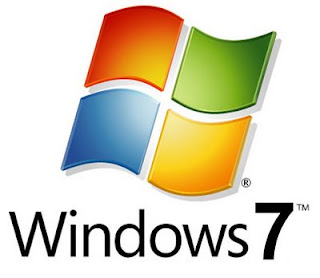Many say that Windows 7 is Microsoft
Q: Windows Media Player in Windows 7 often hangs upon startup or fails to play songs after it crashes. I do have a large music collection on a drive attached to my computer
A: Windows Media Player is great when it works. But lockup problems such as the one you describe are common.
Windows Media Player stores information
To solve the problem, you can try a couple of things. First, move your music and video collection to a locally-connected (internal) drive. Note that after moving your library of files, you should delete the Windows Media Player database and allow the program to rebuild it with the new location information. To delete the database, close Media Player. Then open the Start menu and type "folder options." Click the Folder Options entry, and in the resulting Folder Options dialog box, click the View tab. From the list of options, select "Show hidden files, folders, or drives."
Now use Windows Explorer to navigate to the following folder: C:Usersyour user nameAppDataLocalMicrosoftMedia Player, where your user name is the name you use to log on to your computer. You can select all the files and folders you see in that folder, and delete them. Don't worry. Windows Media Player will rebuild everything when it starts up the next time.
If you get tired of struggling with Windows Media Player, consider "upgrading" to the free and very capable open source media player called VLC (http://www.videolan.org/vlc). This little application
Q: I know that it's possible to burn CDs and DVDs with Windows 7, but I don't find the procedure to be intuitive, and it takes a long time. Is there free software that makes burning easier?
A: To burn a CD or DVD in Windows 7, you pop a disc into your burner and use Windows Explorer to copy or drag the files you want to burn to the CD or DVD drive icon. But you're right: the process does not resemble that used by most standalone burning applications, and there are no niceties such as label creation.
Three notable, free burning applications that many people consider to be an upgrade to the burning capability built in to Windows 7 (and Vista) are BurnAware (http://www.burnaware.com), CD Burner XP (http://cdburnerxp.se/en/home), and the open source InfraRecorder (http://infrarecorder.org). All are simple applications that concentrate on disc burning alone. They do not contain bloatware -- additional features or applications that you probably don't need -- and they are free from the annoying advertisements that mar so many other free applications.
Q: I no longer use Internet Explorer, Media Center, and most of the other applications that come with Windows 7. Is there any way I can uninstall them? I don't see them listed in the Programs and Features section of the Control Panel.
A: You're right. The components you mention are considered part of Windows 7 -- except in the case of the European "N" edition of Windows 7, which unbundles Media Player as part of Microsoft's 2004 antitrust settlement with the European Union. Therefore these components are not listed in the uninstallation dialog box, now called Programs and Features.
But for those who would like to effectively get an "N" version of Windows 7 by removing unwanted or unused components of the operating system, Microsoft has provided the new Windows Features dialog box, which makes it easy to get rid of "integrated" components of Windows 7.
You can access Windows Features from the same Programs and Features dialog box that you use to uninstall applications. The link "Turn Windows features on or off" is listed in the left-hand pane of Programs and Features. Click it, and from the resulting Windows Features dialog box, remove the check mark from any feature that you wish to uninstall. You'll find Media Features and Internet Explorer listed there, as well as other pre-installed components that you may not want.
If you've upgraded Internet Explorer, however, you will need to visit the other link in the left hand pane of Programs and Features -- the one labeled "View installed updates." Click that, and you should find any upgraded version of Internet Explorer listed there.
Q: I know Windows 7 comes with the ability to read zipped files, but I don't like the way it works. At my office
A: The open source 7-Zip (http://www.7-zip.org) is widely considered to be a suitable replacement for WinZip or other fee-based archiving
Q: I use Notepad a lot, but it's still a very limited text editor in Windows 7. What are the best free replacements?
A: For non programmers -- those who don't need special text or syntax highlighting -- look at EditPad Lite (http://www.editpadlite.com), which offers full-featured search and replace functionality, tabs, and dozens of other features that Notepad lacks.

No comments:
Post a Comment
If you have any Doubt..kindly let me know